Blog Log May 27
 May 31, 2007
May 31, 2007
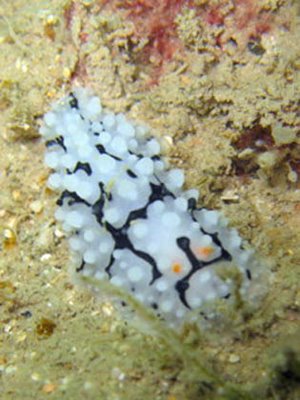 Despite the recent spade of torrential rains, the skies cleared up for us last Sunday. We set out on our bum boat to Hantu Island. We were informed that morning that boat prices will increase in July, which might affect the cost of our dives when July comes, so please be alert to the possibility of revised pricing. We began the day with a commonly spotted Phyllidia sea slug. This was a rather small individual and had a lovely pair of rhinophores which it retracted when it sensed that I was getting close.
Despite the recent spade of torrential rains, the skies cleared up for us last Sunday. We set out on our bum boat to Hantu Island. We were informed that morning that boat prices will increase in July, which might affect the cost of our dives when July comes, so please be alert to the possibility of revised pricing. We began the day with a commonly spotted Phyllidia sea slug. This was a rather small individual and had a lovely pair of rhinophores which it retracted when it sensed that I was getting close.
 Copper banded Butterflyfish are one of the most conspicuous fishes on our reef. They are also great for photography as they seem rather comfortably with cameras and flashes as long as you approach cautiously. I like to compare them with the Black-naped Orioles that we find on the mainland – beautiful and highly visible.
Copper banded Butterflyfish are one of the most conspicuous fishes on our reef. They are also great for photography as they seem rather comfortably with cameras and flashes as long as you approach cautiously. I like to compare them with the Black-naped Orioles that we find on the mainland – beautiful and highly visible.
 This juvenile Flabellina was photographed creeping along the edges of a small barrel sponge. Looking rather pain and simple, not even very colourful like other sea slugs, the Flabellia is actually a solar powered creature. Also known as the Blue Dragon, it swallows microscopic plants called zooxanthellae whilst feeding on hydriods. Within the nudibranch, the plants use the sun’s energy to produce sugars, passing on a considerable portion to the nudibranch for its own use. This nudibranch can also inflict a sting by using the hydriods untriggered stinging cells in its body.
This juvenile Flabellina was photographed creeping along the edges of a small barrel sponge. Looking rather pain and simple, not even very colourful like other sea slugs, the Flabellia is actually a solar powered creature. Also known as the Blue Dragon, it swallows microscopic plants called zooxanthellae whilst feeding on hydriods. Within the nudibranch, the plants use the sun’s energy to produce sugars, passing on a considerable portion to the nudibranch for its own use. This nudibranch can also inflict a sting by using the hydriods untriggered stinging cells in its body.
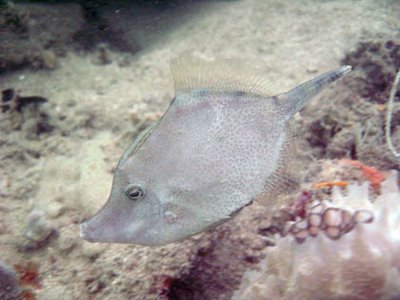 There were loads of filefish (aka. leatherjackets) out this weekend. Alot of them were quite busy feeding so weren’t too bothered by all the photos we were taking. While we usually see small ones about 5-6cm in length, most of Sunday’s sightings seemed almost palm-sized! Some species of filefish and grow up to a meter in length.
There were loads of filefish (aka. leatherjackets) out this weekend. Alot of them were quite busy feeding so weren’t too bothered by all the photos we were taking. While we usually see small ones about 5-6cm in length, most of Sunday’s sightings seemed almost palm-sized! Some species of filefish and grow up to a meter in length.
 Pretty sea fans – these can be quite a challenge to photograph during low visibility days, so I took clever advantage of the opportunity!
Pretty sea fans – these can be quite a challenge to photograph during low visibility days, so I took clever advantage of the opportunity!
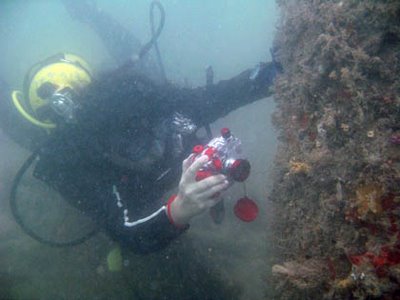 There were many photo-taking opportunities for everyone! Just as well, there were alot of cameras on the reef that day!
There were many photo-taking opportunities for everyone! Just as well, there were alot of cameras on the reef that day!
 A cuttlefish makes a run for it after its cover was blown!
A cuttlefish makes a run for it after its cover was blown!
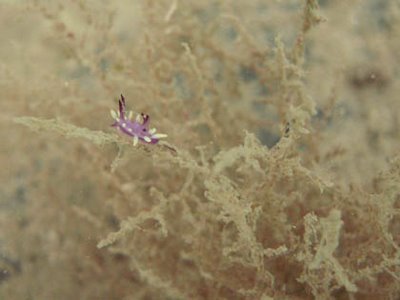 A teeny-tiny nudibranch on a mess of algae. It was only a few millimeters long!
A teeny-tiny nudibranch on a mess of algae. It was only a few millimeters long!
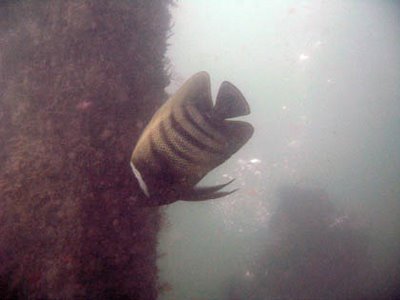 As large a size as they were, the Six banded Angelfish seemed less excited to meet us than we were to see them…
As large a size as they were, the Six banded Angelfish seemed less excited to meet us than we were to see them…
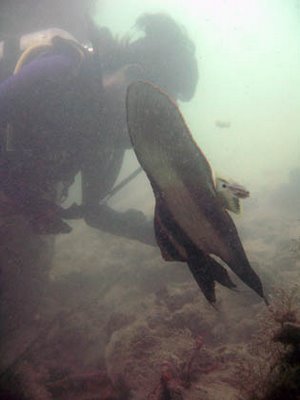
 What a pleasant treat! A juvenile batfish! It wasn’t too fond of being photographed and often turned its back to the cameras or swam into holes and crevices to evade us.
What a pleasant treat! A juvenile batfish! It wasn’t too fond of being photographed and often turned its back to the cameras or swam into holes and crevices to evade us.
 Employing extremely good camouflage, this Tigertail seahorse would never have been spotted if not for Hui Bing‘s unparalleled keen sense of sight and patience!
Employing extremely good camouflage, this Tigertail seahorse would never have been spotted if not for Hui Bing‘s unparalleled keen sense of sight and patience!
<
br /> Rabbitfish were much sought after on Sunday as one of the Hantu Blog’s dive guides, Marco Perrig from Switzerland, has been encouraging everyone to take as many pictures of Rabbitfish as they can as part of his postgraduate project. If you have pix of Rabbitfish and would like to contribute to his research efforts, please email us!
Rabbitfish were much sought after on Sunday as one of the Hantu Blog’s dive guides, Marco Perrig from Switzerland, has been encouraging everyone to take as many pictures of Rabbitfish as they can as part of his postgraduate project. If you have pix of Rabbitfish and would like to contribute to his research efforts, please email us!

 A gorgeous school of silver moonies – They are always magical to watch, silently circling the shallow waters.
A gorgeous school of silver moonies – They are always magical to watch, silently circling the shallow waters.
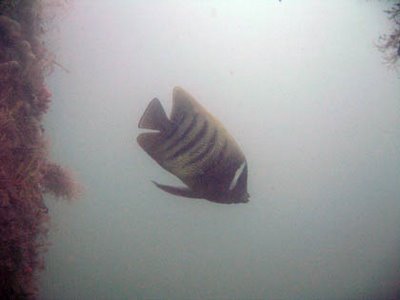 One of the 3 Six banded Angelfish cruising by again…
One of the 3 Six banded Angelfish cruising by again…
 The soft and elongated polyps of the Goniopora coral can make the colony appear about 4-5 times larger! Pretty to look at but nasty to touch, they have a mean sting that may take a few weeks to recover from. I speak with experience!
The soft and elongated polyps of the Goniopora coral can make the colony appear about 4-5 times larger! Pretty to look at but nasty to touch, they have a mean sting that may take a few weeks to recover from. I speak with experience!
 Platygyra is a boulder or massive coral that can be identified by its merged and elongated, wavy walls.
Platygyra is a boulder or massive coral that can be identified by its merged and elongated, wavy walls.
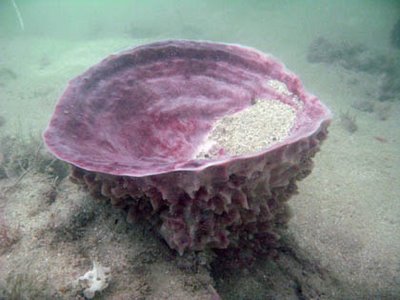
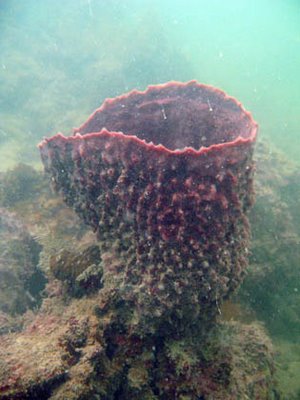 HUGE and very conspicuous barrel sponges (aka. Naptunes cup) surely give the reef a burst of colour!
HUGE and very conspicuous barrel sponges (aka. Naptunes cup) surely give the reef a burst of colour!
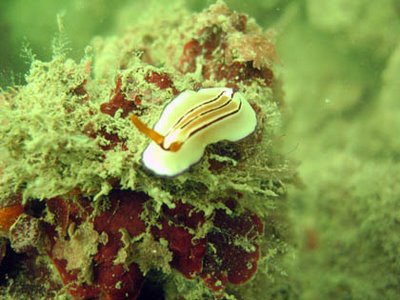 Summing up the day’s diving just before ascending, this brightly coloured Hypselodoris nudibranch popped into my view and I had to stop my ascent just to photograph it! It feeds on algae and is fond of shallow rubble bottoms… just what Hantu has!
Summing up the day’s diving just before ascending, this brightly coloured Hypselodoris nudibranch popped into my view and I had to stop my ascent just to photograph it! It feeds on algae and is fond of shallow rubble bottoms… just what Hantu has!
All of us saw more than what we could’ve asked for during this day’s dive at Hantu. Continue to swing in during the week to see what other treasures were sighted in Hantu by our divers and reef guides!
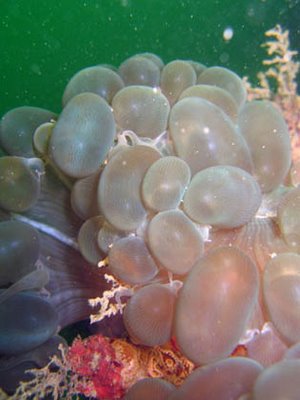





 Posted in
Posted in 



 content rss
content rss
COMMENTS